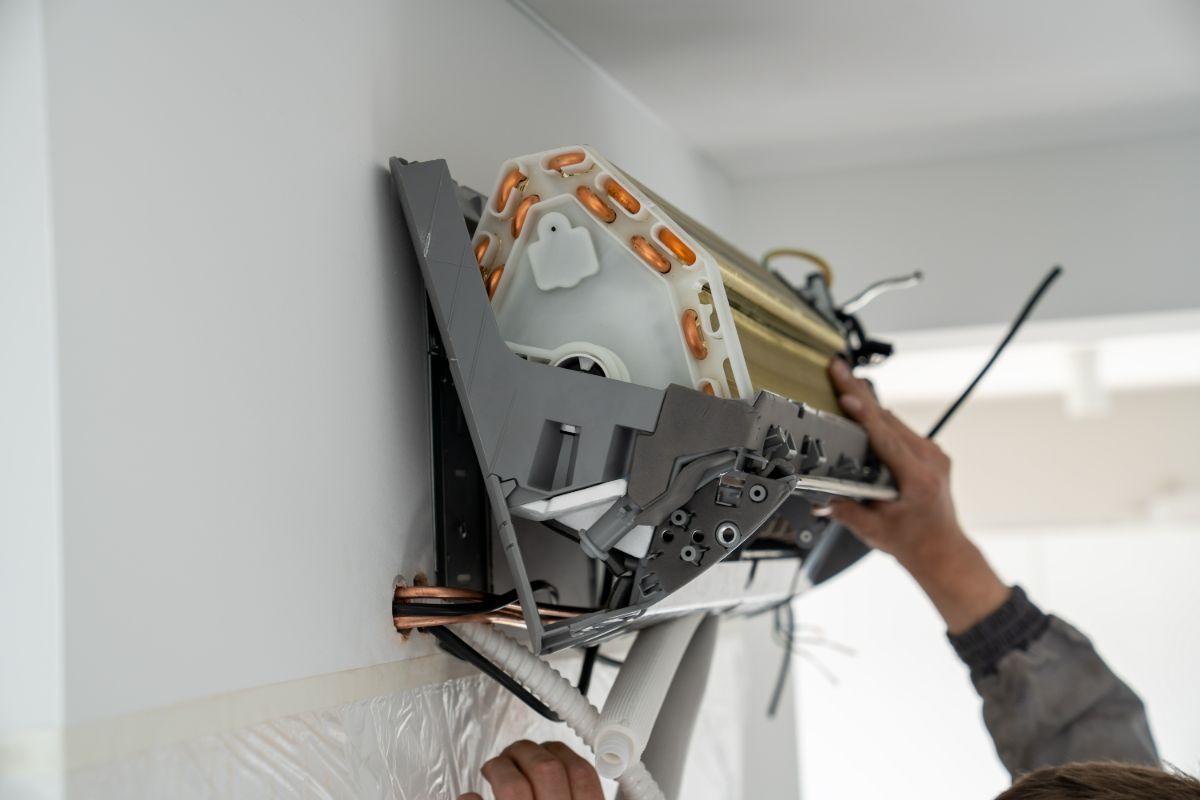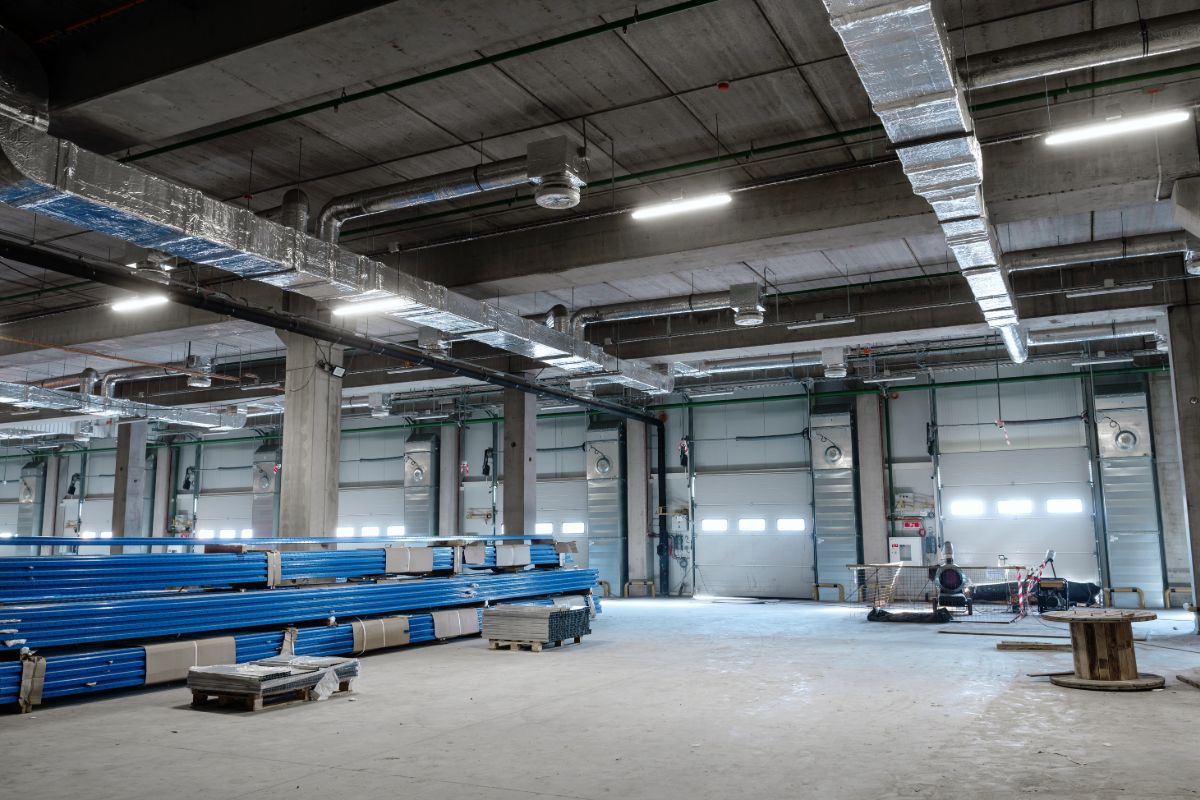What are key ventilation strategies to improve air circulation in the office?
- Maximize natural ventilation
- Install efficient HVAC systems
- Use air purifiers
- Incorporate ceiling fans and ventilators
- Monitor indoor air quality
- Implement zoning within the office
- Encourage breaks and outdoor time
Overview
- This article explores key ventilation strategies to enhance air circulation and create a healthier office environment.
- These involve optimizing natural ventilation, upgrading HVAC systems, utilizing air purifiers, installing fans, monitoring air quality, implementing zoning, and promoting outdoor breaks.
- Choose F.R. Sevilla, a leading HVAC provider in the Philippines, for superior service and maintenance that ensures your office stays comfortable and your air quality remains excellent.
Given that we spend 80-90% of our time indoors, ensuring high indoor air quality in office environments is crucial. Indoor air can be two-five times more polluted than outdoor air, which can lead to discomfort, decreased productivity, and health risks for employees. Prioritizing effective air quality management mitigates these issues, creating a healthier and more productive work environment.
This article explores effective ventilation strategies to improve air circulation in the office. For exceptional HVAC service and maintenance, partner with F.R. Sevilla, a leading HVAC company in the Philippines. We offer reliable service and maintenance to ensure your office environment stays comfortable, helping you and your team breathe easier every day.
Maximize Natural Ventilation

Natural ventilation involves harnessing the natural forces of wind and temperature differences to circulate air. Opening windows and doors helps create a pathway for fresh air to enter and stale air to exit. Here are several ways to do it:
Cross Ventilation: Position windows and openings on opposite sides of the room to facilitate a natural breeze and enhance air circulation.
Single-sided Ventilation: Place windows on one side to naturally ventilate the space when cross ventilation isn’t an option.
Stack Ventilation: Allow cooler outdoor air to enter through ground-floor windows, warm up from internal heat sources, rise to the ceiling, and escape through top vents, establishing an airflow cycle.
Install Efficient HVAC Systems
Upgrade to highly efficient filters to boost your system’s performance. They capture airborne particles to improve air quality and reduce pollutants. Next, adjust the outdoor air dampers to allow more fresh air to enter the building. Widening the dampers enhances ventilation by mixing fresh outdoor air with the indoor environment, contributing to a healthier workspace.
Regular maintenance is also essential. Check for blockages in air ducts and replace filters as needed to ensure efficient airflow. Consistent upkeep keeps your HVAC units running smoothly and maintains a comfortable office environment.
Use Air Purifiers
Investing in air purifiers with High-Efficiency Particulate Air (HEPA) filters is a highly effective way to enhance indoor air quality. These devices capture up to 99.97% of airborne particles, including dust, pollen, and pathogens, improving the air in your office.
Place your purifiers in high-traffic areas and near sources of pollution for optimal results. This ensures purified air reaches the areas that need it most, creating a healthier environment for employees.
Incorporate Ceiling Fans and Ventilators

Ceiling fans are highly effective for improving air circulation. Creating a steady airflow helps distribute conditioned air more evenly, making the office feel cooler and potentially reducing the need for excessive air conditioning. This enhances overall comfort and productivity.
In addition to ceiling fans, exhaust fans are crucial for managing humidity in areas like kitchens and restrooms. They remove stale, moisture-laden air, promoting better air quality. Placing these fans in these high-humidity zones ensures a fresh and comfortable environment throughout the office.
Monitor Indoor Air Quality
Excellent indoor air quality (IAQ) is vital for maintaining a healthy and productive office environment. By using IAQ sensors and devices, you can keep track of several key parameters that impact air quality:
- Temperature and Humidity: Keep temperature and humidity levels within an ideal range to ensure comfort and prevent problems like mold and respiratory issues. Regular monitoring helps maintain a stable, healthy environment.
- Carbon Dioxide Levels: Monitor CO₂ levels to detect ventilation issues early. Elevated levels can lead to fatigue and reduced concentration, so keeping an eye on this helps keep your team alert and productive.
- Particulate Matter: Track particulate matter to assess your air filters’ performance and pinpoint pollution sources. This ensures cleaner air and supports a healthier office environment.
Implement Zoning within the Office
Zoning enhances ventilation in large spaces by dividing them into sections. For example, meeting rooms with high traffic may need more airflow, while quieter areas like individual offices can use less. This targeted approach ensures each zone gets the right amount of ventilation.
To make zoning even more effective, use separate HVAC controls for each area. This setup allows for precise adjustment of airflow according to the needs of each zone, preventing energy waste in less occupied spaces and maintaining comfort throughout the office.
Encourage Breaks and Outdoor Time
Allowing employees to take breaks outside not only refreshes their minds and bodies but also improves indoor air quality. With fewer people in the office, air circulation and ventilation improve, creating a healthier workspace.
Additionally, setting up flexible outdoor workspaces or relaxation areas offers employees a change of scenery. These spaces can enhance morale and creativity, providing a pleasant environment for both work and relaxation.
Key Takeaway
By adopting targeted ventilation strategies to improve air circulation in the office, you and your employees will experience a more pleasant and comfortable environment. Partnering with F.R. Sevilla ensures you receive expert HVAC solutions tailored to these needs, optimizing your workspace for better health and productivity.
Our team excels in delivering premium HVAC solutions to ensure your office enjoys excellent indoor air quality throughout the year. Contact us today to discover how we can enhance your office environment.
RECENT POSTS

Your Guide to Finding the Best Air Conditioning Contractor in the Philippines
What should you look for in an air-con contractor? Licenses and certification Experience and reputation Insurance and wa
Read More

What to Expect from Air Conditioning Contractors?
What can you expect from air conditioning contractors? Comprehensive site assessment Professional installation and testi
Read More

Cut Costs, Not Corners: Energy-Efficient Warehouse Cooling Solutions
What are the benefits of energy-efficient cooling solutions for warehouses? Lowers energy costs Improves employees produ
Read More